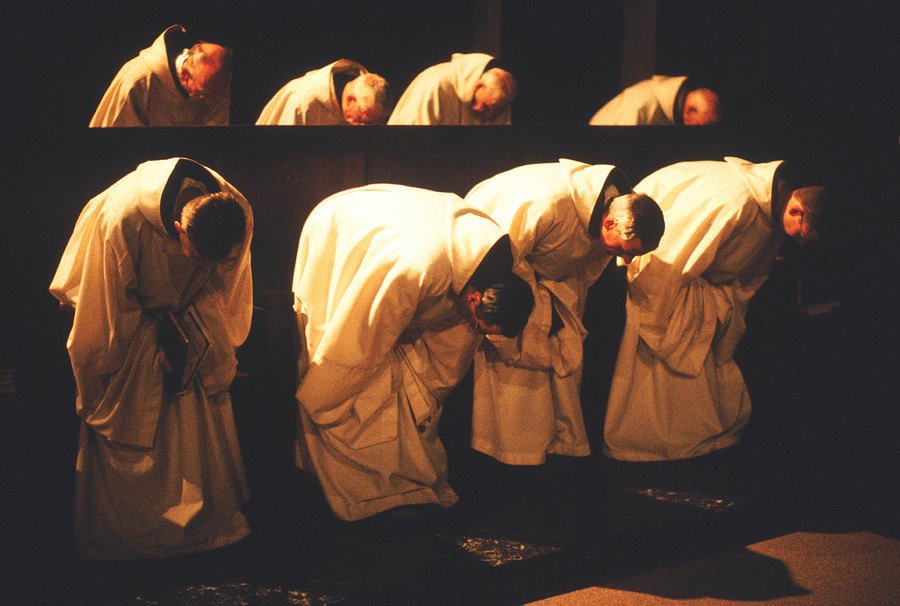Introduction
Monasteries are religious institutions that have played an important role in shaping the cultural and historical landscape of many countries around the world. They are often revered for the beauty of their architecture, their artistic and literary treasures, and the spiritual wisdom passed on by their residents. Monasteries are found in many different cultures and religions, from Buddhism and Christianity to Islam and Hinduism.
These organizations have stood the test of time and continue to be important centers of learning, contemplation, and worship. Each monastery has its own history and cultural significance. Some monasteries have been around for centuries, while others were built only recently but are still of great importance to their communities.
The historical and cultural importance of these sites is reflected in the many architectural and artistic marvels within their walls, as well as in the cultural practices and traditions passed down from generation to generation. In this article, we take a look at some of the best monasteries in the world, known for their historical and cultural importance. We will delve into the stories and traditions that make each monastery unique and highlight the contributions these monasteries have made to their respective cultures and societies.
Sera Monastery, Tibet
Located at the foot of the Tatipu Mountains in Lhasa, Tibet, Sera Monastery is considered one of the most important monasteries in Tibetan Buddhism. It was founded in 1419 by Jamchen Chojey Sakya Yeshe, one of the eight disciples of Tsongkhapa, the founder of the Gelug school of Tibetan Buddhism. Historically, Sera Monastery has played an important role in Tibetan Buddhism. It is one of the three main Gelug monasteries in Tibet, along with the Ganden and Drepung monasteries. The monastery has a long and illustrious history and is an important center for the study of Tibetan Buddhism.
Sera Monastery is also known for its unique tradition of debate, in which monks engage in heated debates about Buddhist philosophy. The debates take place in the courtyard of the monastery and are open to the public. This tradition has been passed down through the centuries and is considered an integral part of the monastery’s cultural heritage. In addition to its religious significance, Sera Monastery also played an important role in the political history of Tibet. The monastery was an important center of resistance against the Chinese invasion of Tibet in the 1950s.
Many monks from Sera Monastery participated in the revolt against the Chinese occupation and monasticism. The hospital was heavily damaged in the ensuing raid. Sera Monastery has been largely restored and is once again a thriving center of Tibetan Buddhism. It is home to more than 600 monks and is open to visitors who want to learn more about Tibetan Buddhism and culture. Overall, Sera Monastery is one of the finest monasteries in the world, both historically and culturally, due to its rich history, unique tradition of debate, and political significance.
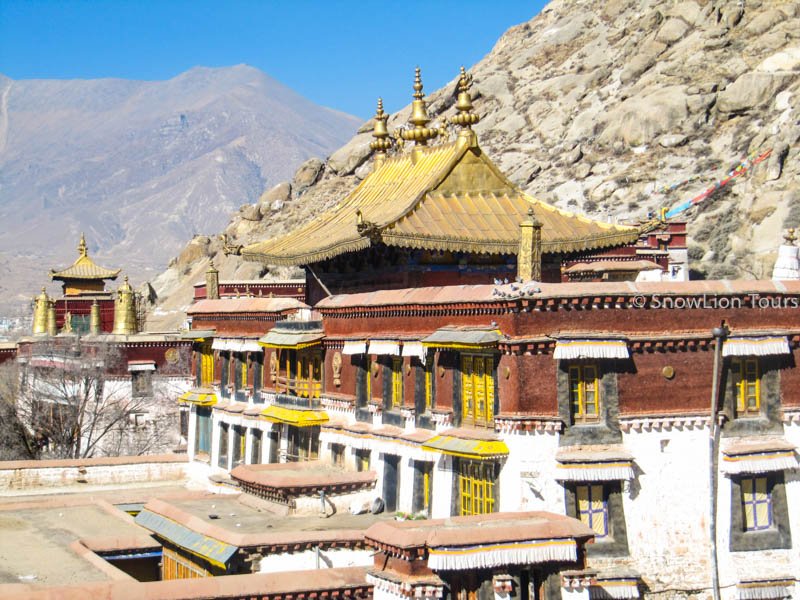
Paro Taktsang Monastery, Bhutan
Paro Taktsang Monastery, also known as Tiger’s Nest Monastery, is located in the Paro Valley in Bhutan. This is one of the most famous and sacred monasteries in Bhutan, built on a cliff 3,000 metres above sea level. Historically, Paro Taktsang Monastery has a fascinating legend. According to legend, Guru Rinpoche, the founder of Tibetan Buddhism, came to this place on the back of a tiger in the 8th century to meditate in a cave. He is said to have meditated in a cave for several months and introduced Buddhism to Bhutan.
The monastery was originally built in 1692 but was destroyed by fire in 1998. It has been restored since then and is now one of Bhutan’s most popular tourist attractions. Culturally, Paro Taktsang Monastery is significant due to its architectural beauty and religious significance. The monastery complex consists of four main temples, each decorated with intricate carvings and vivid paintings depicting the lives of Guru Rinpoche and other deities. The monastery also houses a number of sacred relics, including a statue of Guru Rinpoche and a collection of scriptures believed to have been miraculously stolen from Tibet.
Visitors to the monastery have to climb steeply on the winding mountain road to reach the monastery. The trek can be tough, but it’s a rewarding experience and offers breathtaking views of the Paro Valley and the surrounding Himalayas. Overall, Paro Taktsang Monastery is a great example of Bhutan’s Buddhist culture and heritage. Rich history, beautiful architecture, and sacred significance make it a must-see for visitors to Bhutan.
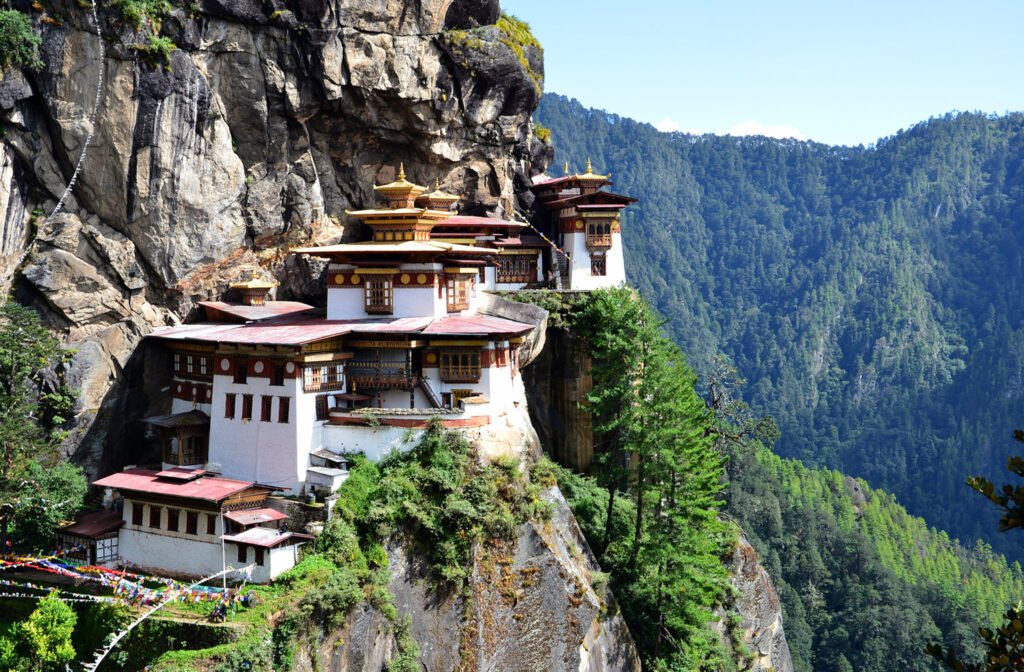
Meteora Monasteries, Greece
The Meteora monasteries are a group of six monasteries built on high rock formations in central Greece. These monasteries testify to the faith and determination of the Orthodox monks who founded them in the 14th and 15th centuries. Monks lead an isolated life, and the only way to reach the monasteries is through a system of pulleys and ropes that requires great skill and strength.
Meteora’s monasteries are distinguished not only by their location but also by their religious importance. The monasteries house a large collection of religious artefacts, including ancient manuscripts, icons, and other priceless works of art. Meteora’s monasteries are also home to some of the most impressive frescoes in the world, depicting biblical scenes and the lives of saints.
Today, the monasteries of Meteora are a popular tourist attraction and a UNESCO World Heritage Site. Visitors can tour the monasteries and learn about the monks who once lived there. The monasteries of Meteora testify to the resilience and determination of the human spirit.
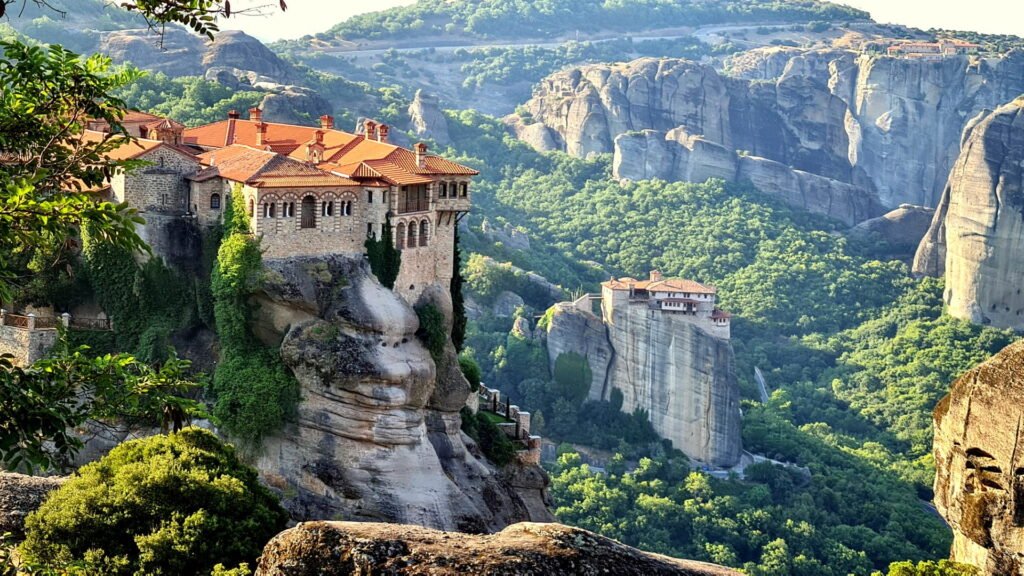
Mont Saint Michel Abbey, France
Mont Saint Michel Abbey is a medieval monastery located on a small island off the coast of Normandy in France. The monastery was founded in the 8th century and has been a place of pilgrimage for over a thousand years. The monastery is a masterpiece of medieval architecture with its intricate masonry and soaring arches testifying to the skill of the craftsmen who built it.
The Monastery of Mont Saint Michel has been an important center of learning throughout its history and its library contains some of the most valuable manuscripts in the world. The monastery was also a refuge and sanctuary, and its walls have withstood countless attacks and sieges over the centuries.
Today, the Monastery of Mont Saint Michel is a popular tourist attraction and a UNESCO World Heritage Site. Visitors can explore the monastery, learn about its history and enjoy the beautiful views of the surrounding countryside. The Monastery of Mont Saint Michel is a symbol of the enduring power of faith and the human spirit.
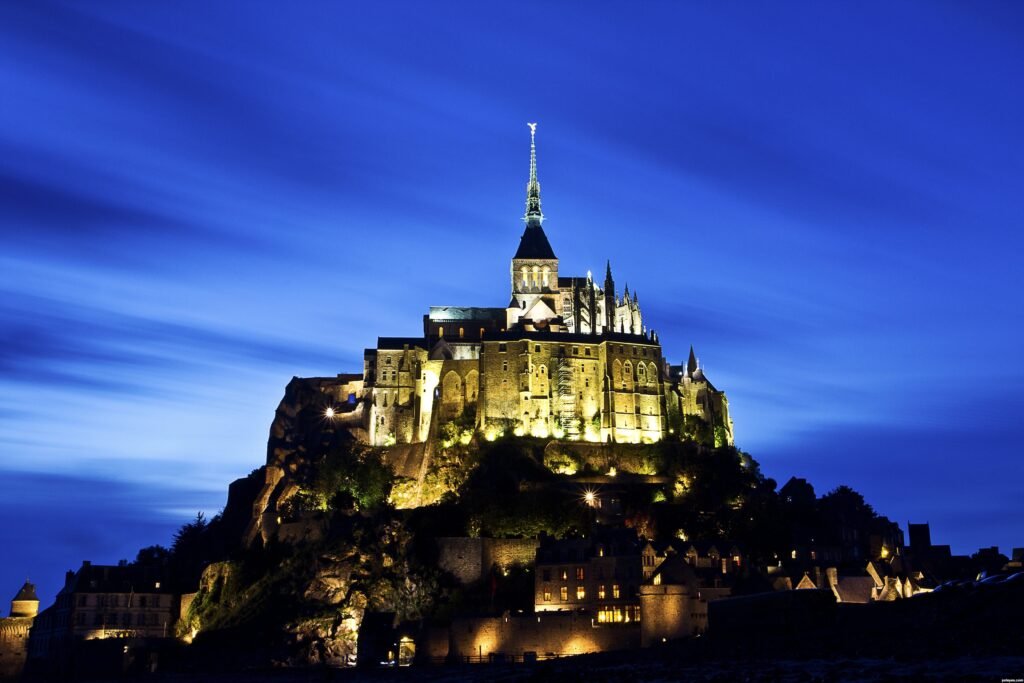
Tengboche Monastery, Nepal
Tengboche Monastery is a Tibetan Buddhist monastery located in the Khumbu region of Nepal, in the shadow of Mount Everest. The monastery was founded in the early 20th century and is the largest and most important monastery in the region. Tengboche Monastery is a place of great spiritual significance for Buddhists, where many pilgrims from all over the world come to pay their respects.
The monastery is famous for its breathtaking scenery surrounded by the peaks of the Himalayas. Tengboche Monastery is also home to some of the most impressive pieces of Buddhist art in the world, including intricate statues, statues and frescoes depicting the life of Buddha and other Buddhist deities.
Tengboche Monastery is an important cultural and spiritual center for the people of Nepal and visitors can experience the rich history and traditions of the area. The monastery is also a popular starting point for hikes and excursions to the nearby mountains, including Everest. Tengboche Monastery is a testament to the enduring power of faith and the natural beauty of the Himalayas.
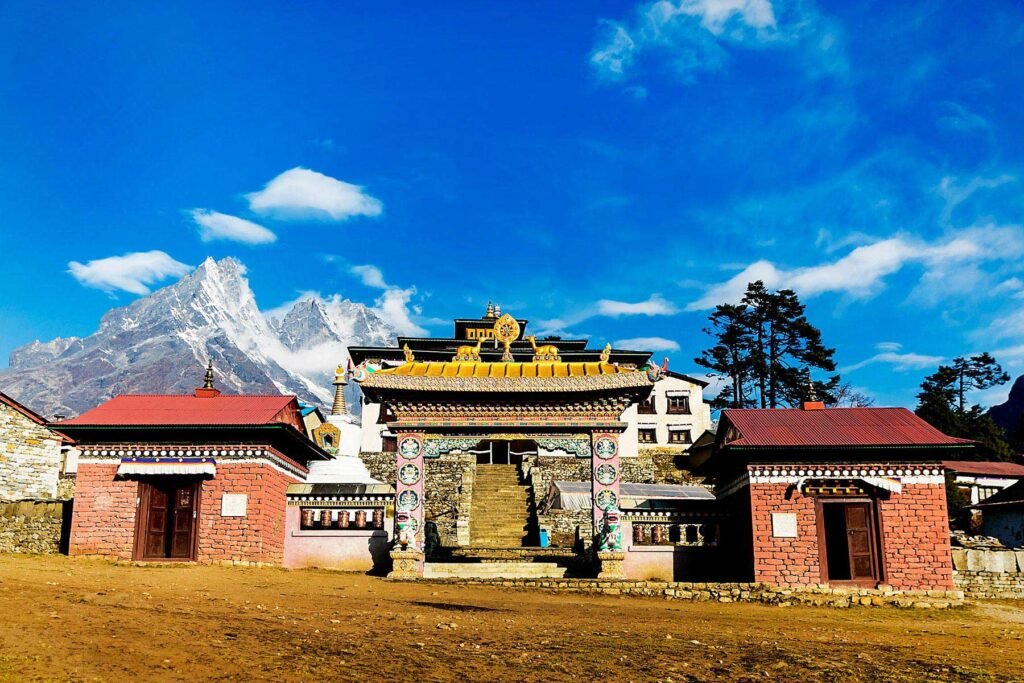
Hemis Monastery, India
Hemis Monastery is located in Ladakh, a region in the north of India. It was founded in the 17th century and is one of the largest and most important monasteries in Ladakh. The monastery is the centre of the Drukpa lineage of Tibetan Buddhism and an important place of pilgrimage for Buddhists from all over the world. Hemis Monastery is known for its splendid architecture and beautiful setting.
The main prayer hall of the monastery is decorated with murals and thangkas depicting Buddhist deities and scenes from Buddha’s life. The monastery also houses a large collection of ancient manuscripts and artefacts. Hemis Monastery is an important cultural and historical monument in Ladakh.
Resident monks hold daily prayers and perform traditional ceremonies throughout the year. Visitors to Hemis Monastery can participate in prayer sessions and learn about Ladakh culture and Tibetan Buddhism. The monastery is also home to the annual Hemis festival, one of the most popular festivals in Ladakh.
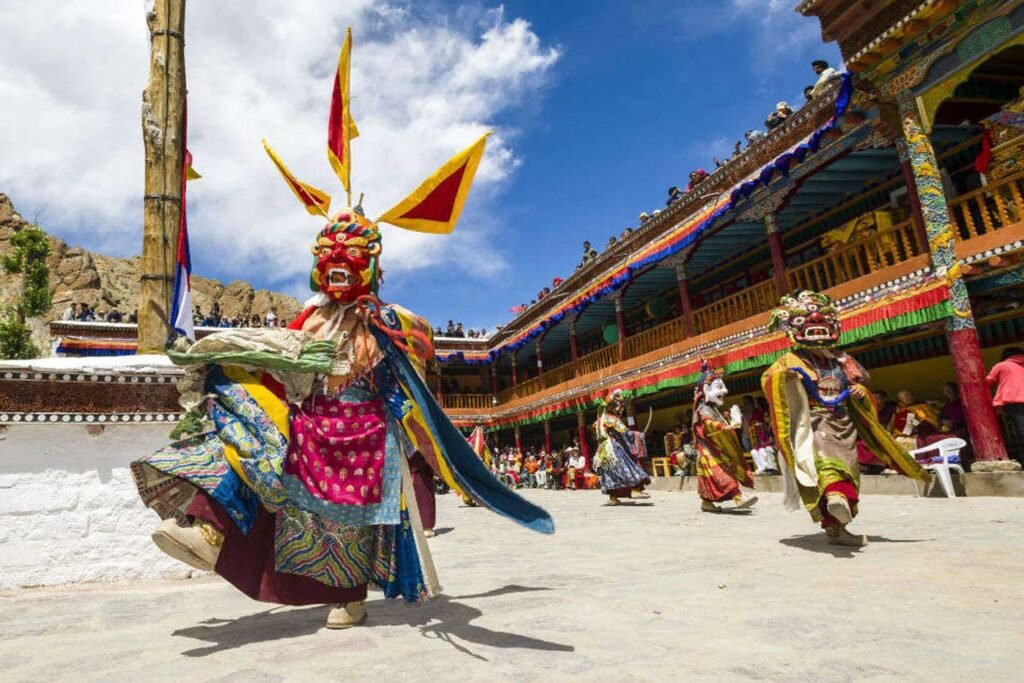
Shaolin Monastery, China
Located in Henan Province, China, Shaolin Temple is one of the most famous monasteries in the world. It is famous for its rich history and cultural heritage, dating back more than 1,500 years. The monastery is also known for its association with martial arts, especially Shaolin Kung Fu. Historically, the Shaolin Temple played an important role in spreading Buddhism throughout China. The monastery was built in 495 AD. During the Northern Wei Dynasty, it was originally the residence of the Indian monk Batuo, who brought Buddhist teachings to China.
Over time, the monastery grew in size and importance, becoming a centre of Buddhist teaching and practise. Culturally, Shaolin Temple is known for its unique blend of Buddhism and martial arts. The monks who live and practise in the monastery are trained in Shaolin Kung Fu, which has become world famous. The monastery also hosts an annual martial arts festival, attracting visitors from all over the world.
The Shaolin Temple has undergone many restorations and embellishments over the years, but many of the original buildings and features remain. Visitors to the monastery can explore many halls, temples, and pagodas, including the Hall of the Heavenly Kings, the Mahavira Hall, and the Temple Forest. All in all, Shaolin Temple is a must-visit for anyone interested in Buddhist history and martial arts. Its rich history, cultural significance, and beautiful architecture make it one of the finest monasteries in the world.
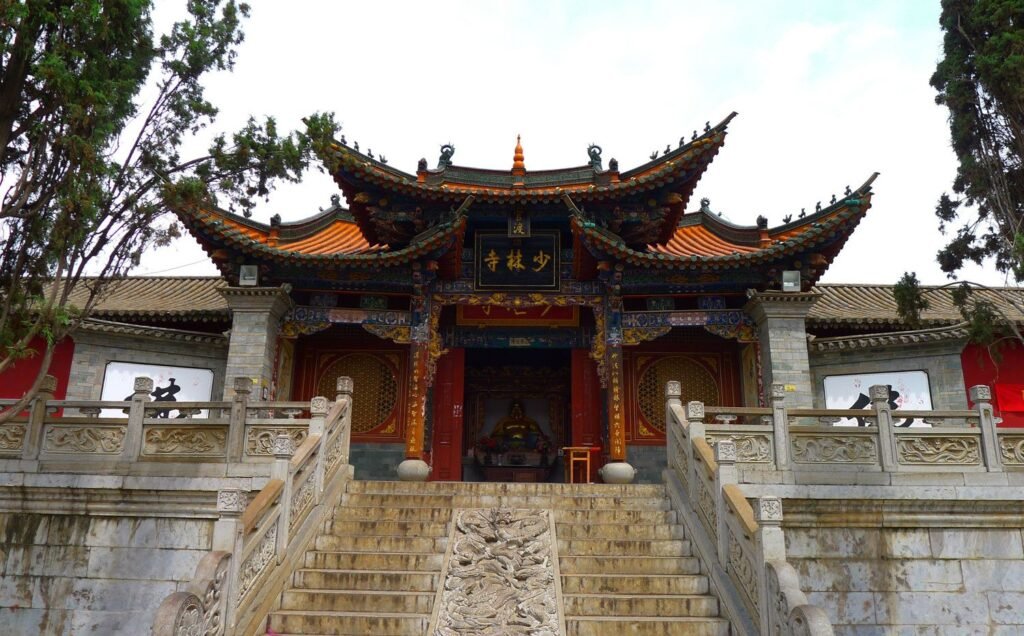
India’s Tibetan Connect: Understanding the Historical, Cultural, and Political Ties – Trybe News

